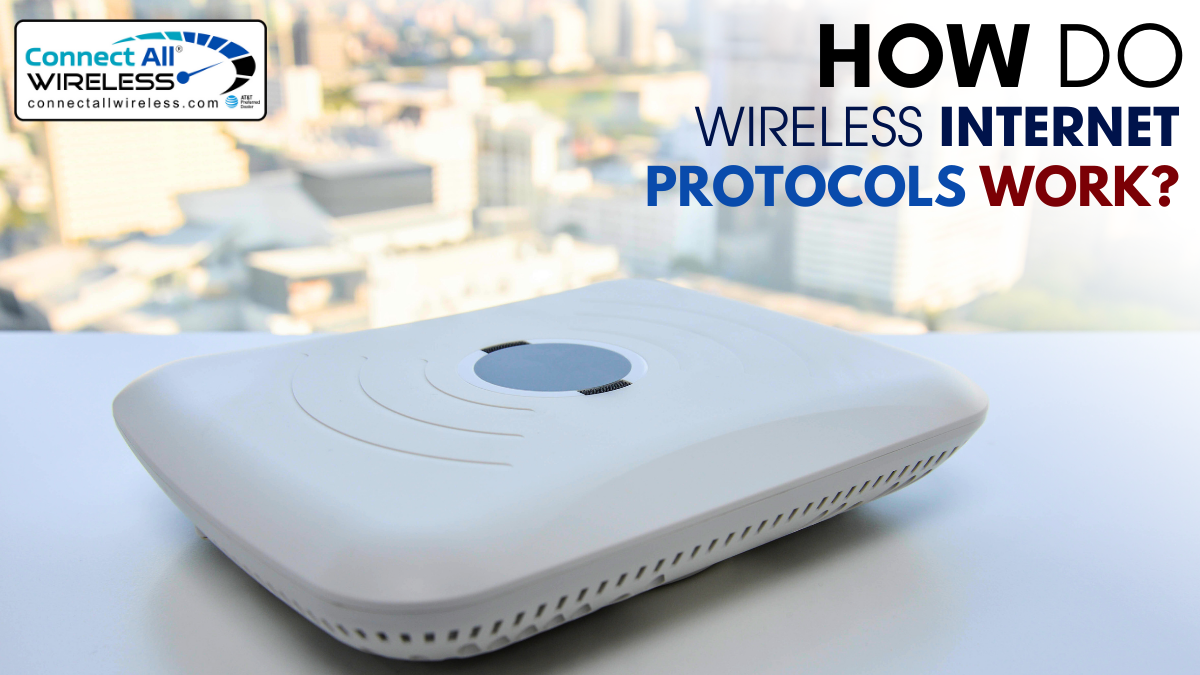How Do Wireless Internet Protocols Work?
May 13, 2024Wireless internet protocols are the backbone of modern communication, enabling seamless connectivity between devices without the need for physical wires. From sending an email to streaming high-definition video, these protocols govern the transmission of data over wireless networks, ensuring reliability, efficiency, and security. In this blog post, we’ll delve into the workings of wireless internet protocols, exploring their fundamental principles, key components, and various standards.
Understanding Wireless Internet Protocols:
At its core, a wireless internet protocol is a set of rules and conventions that govern how data is transmitted, received, and processed over wireless networks. These protocols operate at different layers of the OSI (Open Systems Interconnection) model, which defines a conceptual framework for understanding network communication.
Key Components of Wireless Internet Protocols:
- Physical Layer: This layer deals with the transmission of raw data over the physical medium, such as radio waves or infrared signals. It includes specifications for modulation, coding, and channel access, ensuring that data can be reliably transmitted over the air.
- Data Link Layer: The data link layer is responsible for organizing data into frames and managing access to the physical medium. It includes protocols such as Wi-Fi (IEEE 802.11), Bluetooth, and Zigbee, which define how devices communicate within a local area network (LAN).
- Network Layer: The network layer handles routing and addressing, ensuring that data packets are delivered to their intended destinations across multiple networks. Protocols such as IP (Internet Protocol) and ICMP (Internet Control Message Protocol) operate at this layer, providing the foundation for global connectivity.
- Transport Layer: The transport layer is responsible for end-to-end communication between devices, ensuring that data is delivered reliably and in the correct order. Protocols such as TCP (Transmission Control Protocol) and UDP (User Datagram Protocol) operate at this layer, providing mechanisms for error detection, flow control, and congestion avoidance.
Wireless Internet Standards:
There are several wireless internet standards that govern how devices communicate over wireless networks. Some of the most widely used standards include:
- Wi-Fi (IEEE 802.11): Wi-Fi is the most common wireless networking standard, used for connecting devices within a local area network. It operates in the 2.4 GHz and 5 GHz frequency bands and supports data rates ranging from a few megabits per second to several gigabits per second.
- Bluetooth: Bluetooth is a short-range wireless communication standard used for connecting devices such as smartphones, headphones, and speakers. It operates in the 2.4 GHz frequency band and supports data rates up to several megabits per second.
- Zigbee: Zigbee is a low-power, low-data-rate wireless communication standard used for connecting devices in home automation, industrial control, and sensor networks. It operates in the 2.4 GHz and 900 MHz frequency bands and supports data rates up to 250 kilobits per second.
How Wireless Internet Protocols Work:
- Connection Establishment: The process of establishing a connection between two devices begins with a procedure known as association. During this procedure, the client device sends a request to join the network, and the access point responds with an acknowledgment and assigns a unique identifier known as a MAC (Media Access Control) address.
- Data Transmission: Once the connection is established, data can be transmitted between the client device and the access point using the selected wireless internet protocol. The data is organized into frames, which include a header containing information such as source and destination addresses, as well as a payload containing the actual data to be transmitted.
- Error Detection and Correction: To ensure the integrity of the transmitted data, wireless internet protocols employ techniques for error detection and correction. This typically involves adding redundancy to the transmitted data, such as checksums or error-correcting codes, which can be used to detect and correct errors that occur during transmission.
- Flow Control and Congestion Avoidance: In situations where the network becomes congested or overloaded, wireless internet protocols employ mechanisms for flow control and congestion avoidance to regulate the rate of data transmission. This may involve adjusting the transmission rate based on feedback from the network or implementing algorithms to manage traffic congestion.
Conclusion:
In conclusion, understanding how wireless internet protocols work is essential for ensuring seamless communication between devices over wireless networks. From the physical layer to the transport layer, each component plays a critical role in facilitating reliable, efficient, and secure data transmission.
By adhering to established standards and protocols such as Wi-Fi, Bluetooth, and Zigbee, devices can communicate effectively within local and global networks, enabling a wide range of applications from home automation to industrial control.
For individuals and businesses seeking reliable internet connectivity, selecting the best WiFi internet provider in Michigan involves considering factors such as coverage, speed, reliability, and customer service. By harnessing the power of wireless internet protocols, providers can deliver fast, stable, and secure internet connections to meet the needs of their customers across the state.


